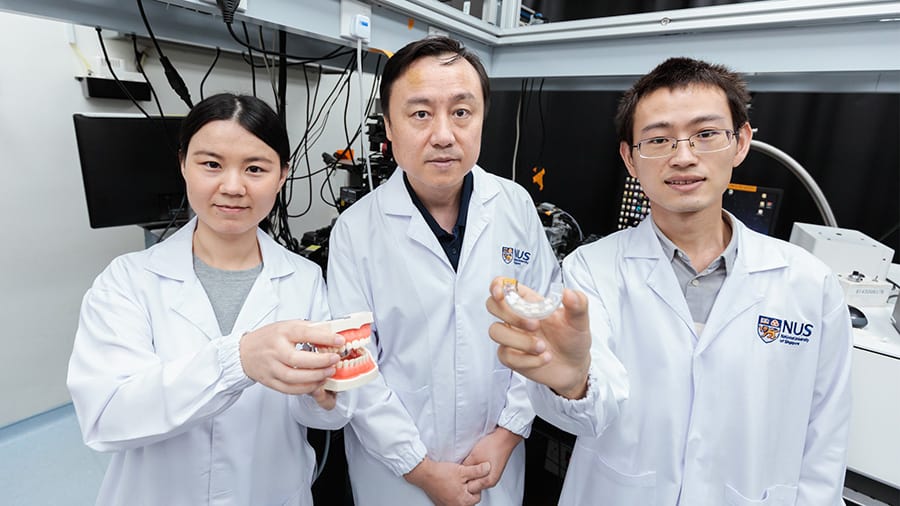Breakthrough invention uses bite force to operate devices with precision

Researchers from the National University of Singapore (NUS) have created an affordable and compact mouthguard that enables disabled people to control devices like computers, smartphones, and wheelchairs with high accuracy.
The “revolutionary” and lightweight innovation translates complex bite patterns from the user wearing a mouthguard accurately and quickly into instructions to easily control electronic gadgets.
This first-of-its-kind bite-controlled optoelectronic system was invented by a research team led by Professor Liu Xiaogang from the Department of Chemistry at the NUS Faculty of Science, together with collaborators from Tsinghua University.
Professor Liu and his team have successfully designed and demonstrated a smart mouthguard containing integrated pressure sensors to detect occlusal patterns. These patterns are translated into data inputs with 98 percent accuracy, according to NUS, and can be used to control assistive devices like wheelchairs.
The research team first designed a sensor comprising a series of contact pads containing different coloured phosphors; these are substances that emit light in response to pressure. The array of contact pads is placed within a flexible mouthguard.
Biting causes the contact pads to mechanically deform and emit light in different colours and intensities, which can be measured and processed using machine learning algorithms. The data collected is then used for high-accuracy remote control and operation of various electronic devices, such as a computer, smartphone and wheelchair.
Professor Liu explained: “Our bite-controlled optoelectronic system is capable of translating complex bite patterns into data inputs with 98% accuracy. We have also demonstrated that our novel sensors can distinguish mechanical deformations, including strain, compression and bending, making them applicable to multifunctional mechanical sensing applications, such as miniaturised force sensing, flexible electronics, artificial skin, and dental diagnosis.”
Weighing about 7g, the novel mouthguard requires less training experience when compared to existing assistive technologies, according to NUS.
The team’s technological breakthrough was published in Nature Electronics on 10 October 2022.
Besides supporting human-computer interaction, the interactive mouthguard can also be used for medical assistance, healthcare devices such as smart electronic skin, and dental diagnosis.
The NUS team says that its new bite pattern invention overcomes traditional limitations often found in current assistive technologies, such as a requirement for large operating memory, the need for devices to be used in quiet environments, and front-mounted eye-tracking cameras giving users fatigue.
Each smart mouthguard currently costs S$100 to produce in the lab, and the team expects the cost to be reduced substantially in mass production. Although the current prototype is designed for “well-aligned” teeth, a mouthguard with an irregular arrangement of phosphor-infused pads could be developed for users with different tooth patterns or for individuals who wear dentures.
NUS had filed for a patent and is exploring opportunities to validate the device in a clinical setting, such as care centres or nursing homes. Concurrently, the researchers are also looking at ways to enhance their technology, such as faster data processing and training.

